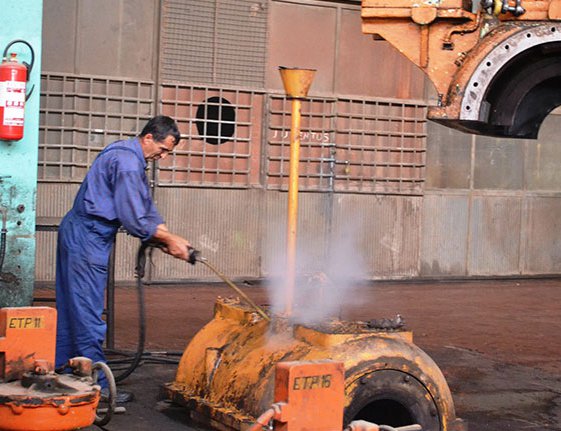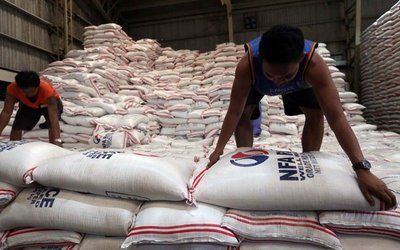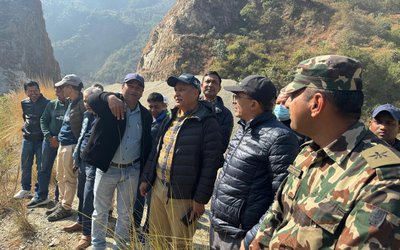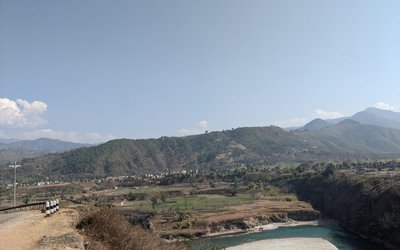
GENEVA (ILO News) – Work-related diseases and injuries were responsible for the deaths of 1.9 million people in 2016, according to the first joint estimates from the World Health Organization (WHO) and International Labour Organization (ILO).
According to the WHO/ILO Joint Estimates of the Work-related Burden of Disease and Injury, 2000-2016: Global Monitoring Report , the majority of work-related deaths were due to respiratory and cardiovascular disease.
Non-communicable diseases accounted for 81 per cent of the deaths. The greatest causes of deaths were chronic obstructive pulmonary disease (450,000 deaths); stroke (400,000 deaths) and ischaemic heart disease (350,000 deaths). Occupational injuries caused 19 per cent of deaths (360,000 deaths).
The study considers 19 occupational risk factors, including exposure to long working hours and workplace exposure to air pollution, asthmagens, carcinogens, ergonomic risk factors, and noise. The key risk was exposure to long working hours – linked to approximately 750,000 deaths. Workplace exposure to air pollution (particulate matter, gases and fumes) was responsible for 450,000 deaths.
“It’s shocking to see so many people literally being killed by their jobs,” said Dr Tedros Adhanom Ghebreyesus, WHO Director-General. "Our report is a wake-up call to countries and businesses to improve and protect the health and safety of workers by honouring their commitments to provide universal coverage of occupational health and safety services.”
Work-related diseases and injuries strain health systems, reduce productivity and can have a catastrophic impact on household incomes, the report warns.
Globally, work-related deaths per population fell by 14 per cent between 2000 and 2016. This may reflect improvements in workplace health and safety, the report says. However, deaths from heart disease and stroke associated with exposure to long working hours rose by 41 and 19 per cent respectively. This reflects an increasing trend in this relatively new and psychosocial occupational risk factor.
This first WHO/ILO joint global monitoring report will enable policy makers to track work-related health loss at country, regional and global levels. This allows for more focused scoping, planning, costing, implementation and evaluation of appropriate interventions to improve workers’ population health and health equity. The report shows that more action is needed to ensure healthier, safer, more resilient and more socially just workplaces, with a central role played by workplace health promotion and occupational health services.
Each risk factor has a unique set of preventive actions, which are outlined in the monitoring report to guide governments, in consultation with employers and workers. For example, the prevention of exposure to long working hours requires agreement on healthy maximum limits on working time. To reduce workplace exposure to air pollution, dust control, ventilation, and personal protective equipment is recommended.
“These estimates provide important information on the work-related burden of disease, and this information can help to shape policies and practices to create healthier and safer workplaces,” said Guy Ryder, ILO Director-General. “Governments, employers and workers can all take actions to reduce exposure to risk factors at the workplace. Risk factors can also be reduced or eliminated through changes in work patterns and systems. As a last resort personal protective equipment can also help to protect workers whose jobs mean they cannot avoid exposure.”
“These almost 2 million premature deaths are preventable. Action needs to be taken based on the research available to target the evolving nature of work-related health threats,” said Dr. Maria Neira, Director of the Department of Environment, Climate Change and Health at WHO. “Ensuring health and safety among workers is a shared responsibility of the health and labour sector, as is leaving no workers behind in this regard. In the spirit of the UN Sustainable Development Goals, health and labour must work together, hand in hand, to ensure that this large disease burden is eliminated.”
“International labour standards and WHO/ILO tools and guidelines give a solid basis to implement strong, effective and sustainable occupational safety and health systems at different levels. Following them should help to significantly reduce these deaths and disabilities,” said Vera Paquete-Perdigao, Director of the Governance and Tripartism Department at ILO.
A disproportionately large number of work-related deaths occur in workers in South-East Asia and the Western Pacific, and males and people aged over 54 years.
The report notes that total work-related burden of disease is likely substantially larger, as health loss from several other occupational risk factors must still be quantified in the future. Moreover, the effects of the COVID-19 pandemic will add another dimension to this burden to be captured in future estimates.
- Zelenskyy calls for resupply of Ukraine's air defense systems
- Jan 05, 2025
- Gaza Ceasefire Talks Resume In Qatar
- Jan 05, 2025
- Biden Blocks Nippon Steel Buyout of US Steel
- Jan 04, 2025
- Sources Says Investigators to detain South Korean President Yoon
- Jan 03, 2025
- FBI: Suspect may not be solely responsible for deadly New Orleans
- Jan 02, 2025















